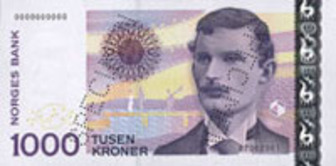The currency name of BOUVET ISLAND, NORWAY, SVALBARD AND JAN MAYEN is the Norwegian Krone

When the Nazis occupied Norway during the Second World War, the Norwegian krone was tied to Germany‚'s currency, the Reichmark. After Germany lost the war, the Norwegian krone was consequently devalued. During this period, the krone was then tied to the British pound. In the early 90s, Norway‚'s central bank got rid of the country‚'s fixed exchange rate and adopted a floating exchange rate, in which the value of the krone would be determined by supply and demand rather than being tied to rising and falling foreign currencies.
In the past, the exchange rate of the Norwegian krone was affected by the fluctuations in the exchange rates of Norway‚'s principal trading partners, which include other Scandinavian countries, Germany, and the United Kingdom. Now, however, since much of Norway‚'s prosperous economy is dependent on petroleum, fluctuations in the oil market can have an effect on the exchange rate of the currency. As with other currencies, the instability of the world financial market can take a toll at any time. However, in 2009 Time magazine reported that the Norwegian krone is the world‚'s safest currency in which to invest, especially since several of the countries that use currencies that rival the Norwegian krone have suffered economic downturns. There has been some speculation that as the Swiss franc has plummeted, Norway may be the new safe haven for investors who need a stable place to deposit their excess liquid assets.
